February 24–April 18, 2010
Arcadia University Art Gallery
Arcadia University Art Gallery is pleased to present “Ai Weiwei: Dropping the Urn (Ceramic Works, 5000 BCE – 2010 CE)”, a solo exhibition of works by Chinese, Beijing-based artist Ai Weiwei (b. 1957). Opening February 24, 2010, the show will run through April 18, 2010 and is scheduled to coincide with the spring 2010 conference of the National Council on Education for the Ceramic Arts (NCECA) to be held in Philadelphia (March 31 to April 3). After its presentation at Arcadia, the show will travel to the Museum of Contemporary Craft (Portland, Oregon) where it will open on July 15. Co-curated by gallery director Richard Torchia and Gregg Moore (artist and Associate Professor of Art and Design at Arcadia University), the exhibition is the first solo show by the artist to be presented outside of New York City in the United States.
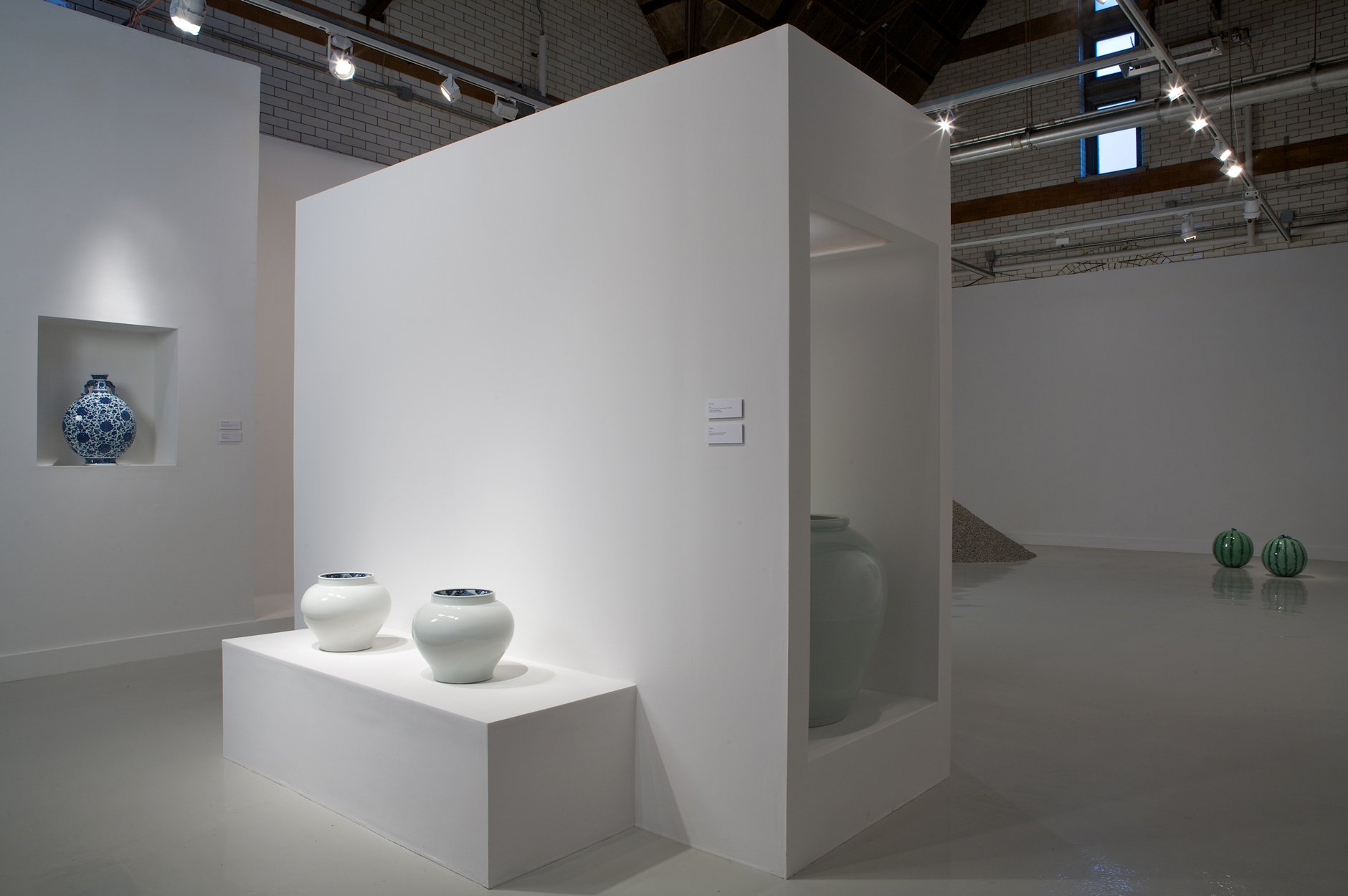
Installation view, "Ai Weiwei: Dropping the Urn," 2010, Spruance Gallery, photo: Greenhouse Media
Featuring a selection of ceramic works and photographs ranging from 1993 to the present, “Ai Weiwei: Dropping the Urn” will offer viewers a focused look at Ai’s iconoclastic appropriations of historic clay pots and porcelain vases. The oldest pieces in the show utilize 7000-year old Neolithic urns dating from 5000 BCE*. The aura of these and other artifacts helps to define a body of work distinguished by its paradoxical investment in the Chinese ceramic vessel, a legacy whose values and significations it both questions and transcends. Ai’s focused exploration of earthenware and porcelain, begun when the artist returned to Beijing in 1993 after a decade in New York City, is critical to understanding a radical practice that has evolved to incorporate sculpture, installation, photography, video, performance, and architecture as well as curating and activism.
“Ai Weiwei: Dropping the Urn” will include examples of Ai’s unprecedented use of Neolithic and Han dynasty vessels as “readymades” that the artist subjects to a variety of procedures. These include marking 2000-year-old clay urns with hand-painted inscriptions of the “Coca-Cola” logo, dipping them into vats of industrial paint, smashing them on the ground in performances for the camera, and grinding the vessels into powder. Writing in the exhibition’s catalog essay about Ai’s “gestural practice” of defacing and destroying of these ancient objects to transform them into works of contemporary art, Beijing-based critic Philip Tinari remarks that these works provide “the illusion of clarity alongside the persistent specter of ambiguity.” What appears at first “like the sublimation of an ancient object’s financial value and cultural worth into a different yet parallel carrier of updated value and worth” also serves as a “satire of the ruling regime’s approach to its patrimony, and of contemporary China’s curious relation to its past, a situation where destruction of historical artifacts happens almost daily.”
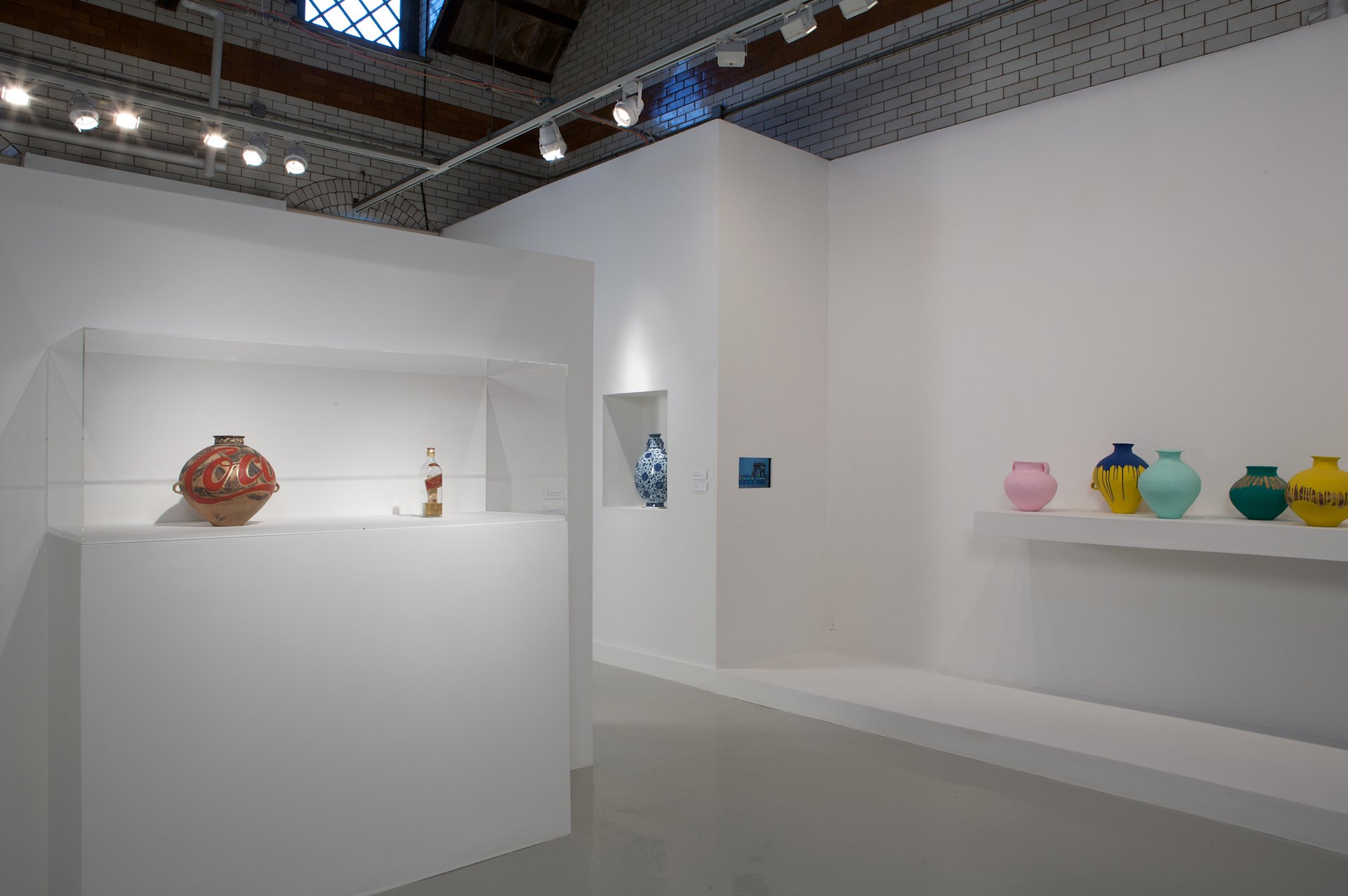
Installation view, "Ai Weiwei: Dropping the Urn," 2010, Spruance Gallery, photo: Greenhouse Media
The exhibition will also showcase replicas appropriating Qing dynasty (18th-century) porcelain commissioned by the artist from craftsmen in the town of Jingdezhen, where porcelain has been produced for the past 1700 years. Ai’s contemporary versions of these “blue and white” flasks and jars are impossible to distinguish from the priceless originals without the aid of carbon dating, if even then, as counterfeiters often mix in flecks of old clay to foil investigators. As such, these and other “fake” works in the exhibition stand as material interrogations of authenticity and the ways in which value is constructed and perceived. Other, more recent works in the exhibition, such as a pair of spherical “watermelons”, mimic the traditional tromp-l’oeil strategy of producing glazed teapots and vases that replicate natural forms. Like many of the other works in the exhibition, they play with notions of the vessel as container vs. that which is contained while prompting questions that can broach issues of labor, class, and power. The largest piece in the exhibition, for example, appears to be a conical pile sunflower seeds, a common street snack in China. Each “seed” however, is painstakingly handcrafted from porcelain. Weighing precisely one ton, the mound’s resemblance to minimalist sculpture and the free takeaways of Felix-Gonzales Torres is contradicted by its profligate expenditure of manual effort as well as a reference to a line of communist propaganda suggesting that the Chinese people were sunflowers following Mao Zedong. As a group, the selected examples show Ai working through the dynastic progression of Chinese ceramics to reconcile the formal, material logic and historical, political commentary that give his work its unique mixture of gravity and wit.
* “Before Common Era”, a non-religious alternative to the use of B.C.
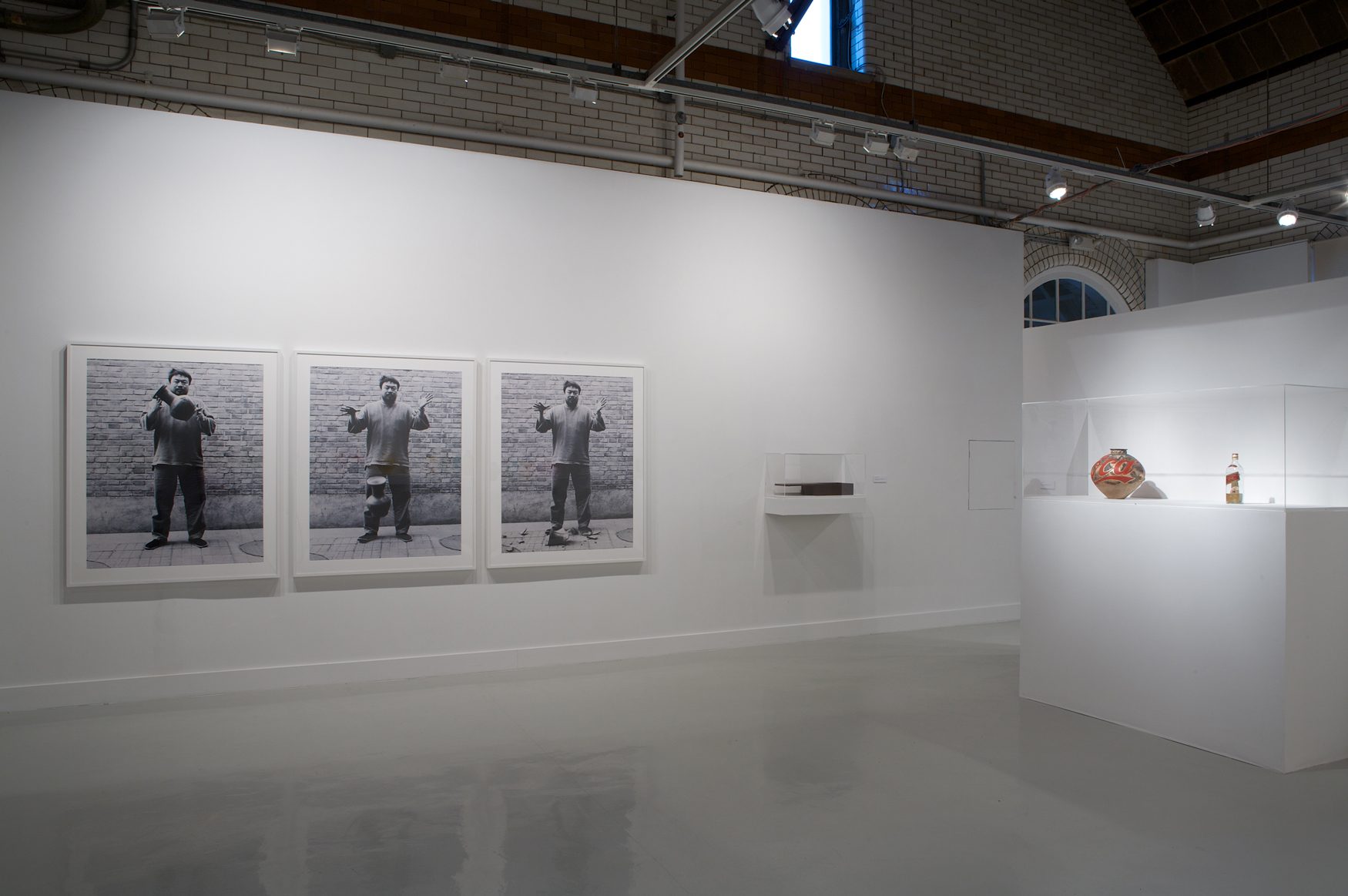
Installation view, "Ai Weiwei: Dropping the Urn," 2010, Spruance Gallery, photo: Greenhouse Media
ABOUT AI WEIWEI
Ai Weiwei is a leading representative of contemporary art in China. Contemporary curator Karen Smith, in her essay for the Groninger Museum’s 2007 exhibition of Ai’s clay work, writes:
Ai uses what can be classified as ‘Chinese’ materials and a range of traditional and culturally specific craft practices and techniques but the artworks ‘transcend’ because he doesn’t use these things in a typical ‘Chinese way’ that was the modus operandi of the early avant-garde, and a defining element of the 1990s movements like Political Pop or Gaudy Art—or more commercially driven approaches that have emerged in recent years…He has never had recourse to specifically political motifs in his work, although his work is among the most political-oriented in all contemporary Chinese practice.
Born in Beijing in 1957, Ai Weiwei is the son of Ai Qing, a well-known Chinese poet who was denounced during the Anti-Rightist Campaign (1958-59) and subsequently banished to a labor camp in Xinjiang. During the late 1970s Ai attended the Beijing Film Academy and in 1979 exhibited his work with “the Stars” in what is widely regarded as the first exhibition of avant-garde art in post-Mao China. In 1981, Ai moved the United States where after a year in Philadelphia followed by a second in Berkeley, he settled in New York City. There he experimented with different forms of art making, including the production of sculpture from found objects, a method introduced to him by a book about Duchamp. Upon his return to Beijing in 1993, Ai became interested in classical Chinese art and grew to appreciate the skill and instincts of craftspeople that, under the influence of various imperial dynasties, had created objects whose beauty he was shocked to find in the stalls of flea markets.
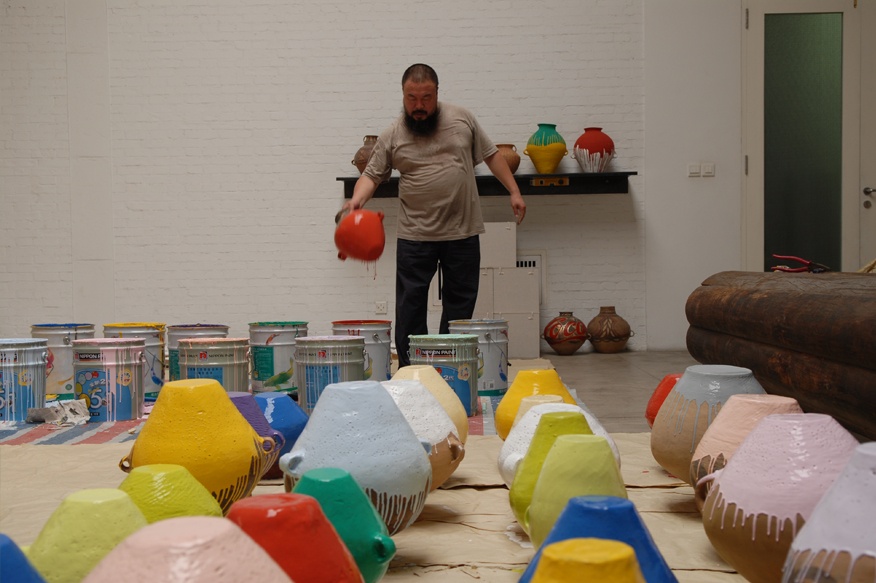
Making of Colored Vases, Ai Weiwei
In response, Ai began to research the materialistic consumer culture then emerging in China and to study the mechanisms used to construct political and national symbolism. Fusing the hands-off strategies of the Duchampian readymade and with a bias for Minimalism, Ai has developed what critic David Coggins calls a “humane conceptualism—a “cunning, humorous and ultimately compassionate form of provocation to the global scene”.
While the works that result speak universally, for Ai, the specific context of China is always the starting point. Among Ai’s most widely recognized contributions to date is Beijing’s National Olympic Stadium (2008), for which he served as a consultant to architects Herzog & de Meuron. (The design, which was proposed by Ai, originated from a study of Chinese ceramics and employs a web of steel beams intended to mask supports for a retractable roof that was never actually built but gives the structure the appearance of a bird’s nest.) Prior to the opening ceremonies of the Olympics, Ai distanced himself from nationalistic propaganda that attempted to use the stadium as a symbol. Fairytale, the first his two contributions to “Documenta 12” (2007), brought 1001 Chinese citizens to Kassel, Germany, over the course of this exhibition’s 100 days. The second, Template, was a radiating arch-like gate made of Ming Dynasty doors and windows collected from Beijing buildings razed to make room for new development. Destroyed by a powerful windstorm shortly after its installation, Template remained on view throughout the exhibition in its fallen state at Ai’s request. Despite these and other activities in a variety of media and cultural arenas (including a popular blog that has been repeatedly shut down by Chinese authorities due to Ai’s provocative writings and an ongoing attempt to collect the names of the schoolchildren who perished in the Sichuan earthquake of 2008) Ai’s fascination with ceramics and its powerful links to China’s cultural identity remains central to his work. Establishing a connection between Ai’s activism and his creative practice, Tinari’s essay for the exhibition catalog quotes the artist saying: “Duchamp had the bicycle wheel, Warhol had the image of Mao. I have a totalitarian regime. It is my readymade.”
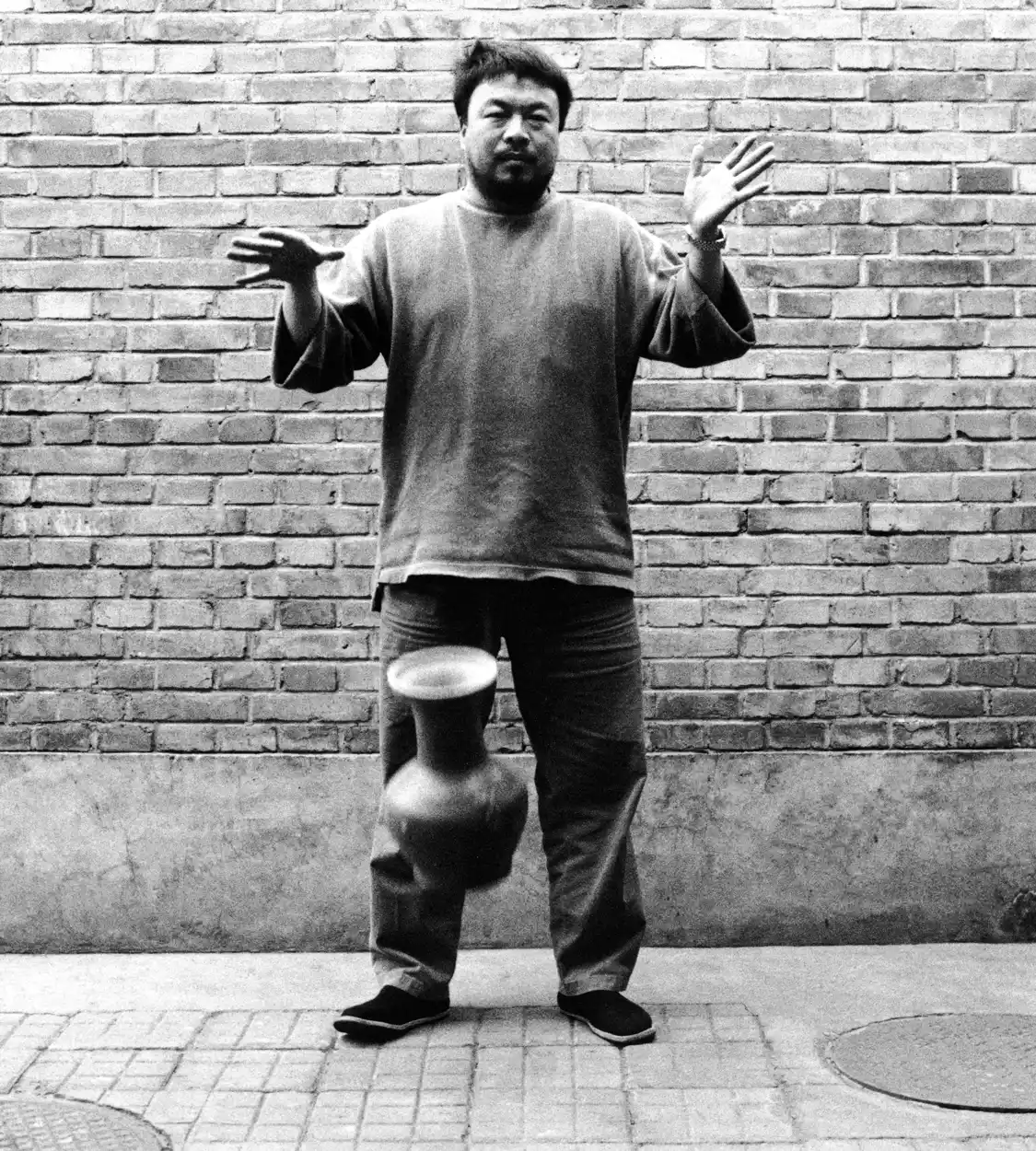
Dropping a Han-Dynasty Urn 1995 second in a triptych of gelatin silver prints each print 49 5/8” x 39 1/4” Courtesy private collection, USA
Exhibition Publication
Overview
The exhibition will be accompanied by a fully illustrated catalog featuring four essays commissioned for the exhibition and appearing in the book both in English and in Chinese translation. In addition to a comprehensive, first-hand account of the place of ceramics within Ai’s larger multi-disciplinary practice by Philip Tinari, the book will include a text by critic Dario Gamboni (examining Ai’s strategies within the legacy of iconoclasm); an essay situating Ai’s work within the tradition of Chinese ceramics by Stacey Pierson (a noted scholar in the field), and a text by Glenn Adamson (head of graduate studies in the research department at the Victoria and Albert Museum, London) exploring Ai’s ongoing iterations of his Coca-Cola Vase. The catalog will also include the first English translation of an interview with Ai originally published in his White Cover Book (1995), the second in an influential trio of volumes that marked the re-emergence of the contemporary art scene in the mid-1990s. In addition to including material about Marcel Duchamp, these books were the first to publish images and information about the work of Jasper Johns, Jeff Koons, Jenny Holzer, and Barbara Kruger (among other contemporary American artists) in Chinese. The exhibition catalog is produced in collaboration with Office for Discourse Engineering, a Beijing-based editorial studio, and will be distributed in the U.S. by RAM Publications.
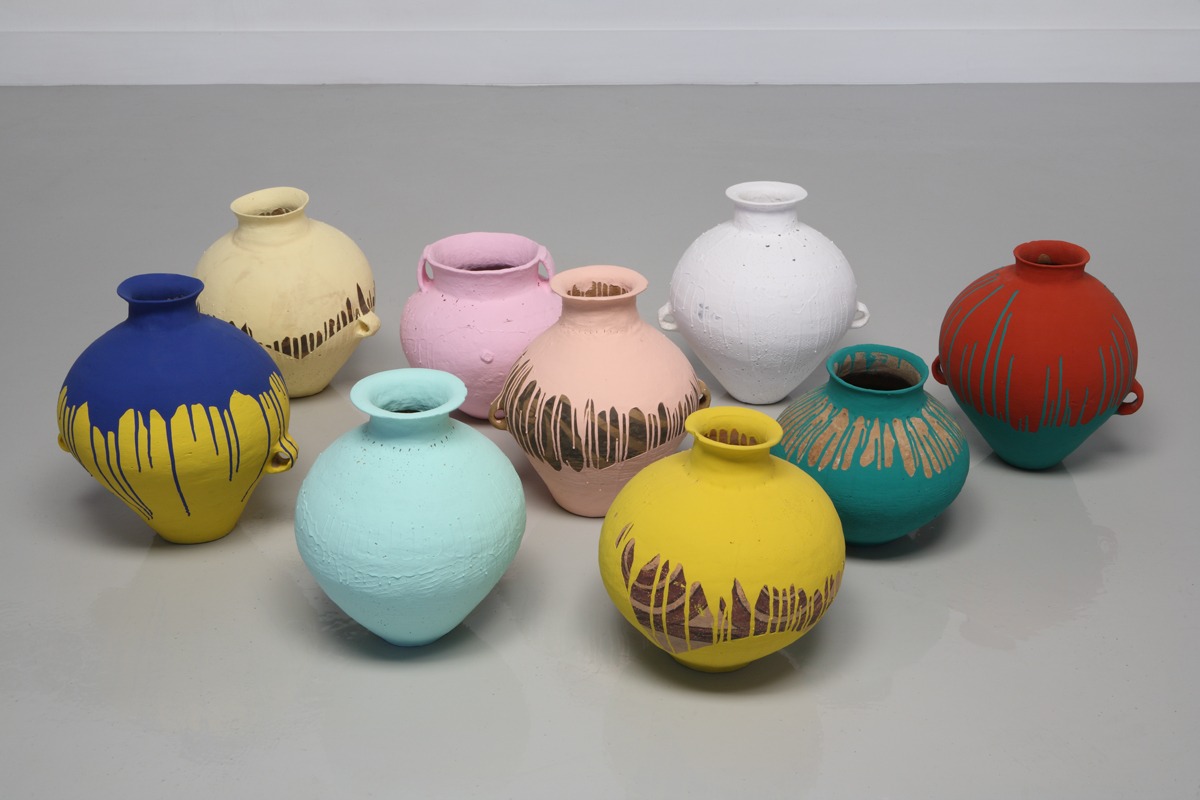
Colored Vases 2006 vases from the Neolithic age(5000-3000BCE) and industrial paint, from between 10”x diameter 9 1/2” Courtesy AW Asia collection. New York
Authors and Essay Excerpts
Philip Tinari
[Philip Tinari] Tinari is founding editor of LEAP, a new bimonthly journal of contemporary Chinese art based in Beijing and published by the Modern Media Group. Since 2007, he has run the publishing imprint, editorial office, and translation studio Office for Discourse Engineering. Tinari is a contributing editor to Artforum and adjunct professor of art criticism at the China Central Academy of Fine Arts. He serves as China advisor to the international art fairs Art Basel and Art Basel Miami Beach and worked previously as academic consultant to the Chinese contemporary art department at Sotheby’s. He has written and lectured widely on contemporary art in China, for publications including The Wall Street Journal, The New York Times Magazine, and Parkett. Recent projects include the book Hans Ulrich Obrist: The China Interviews (2009) and the exhibition The Hong Kong Seven, mounted by the Fondation Louis Vuitton at the Hong Kong Museum of Art last year. A native of Huntingdon Valley, Pa. and a resident of Beijing for much of the past decade, he holds an A.M. in East Asian studies from Harvard (2005), a B.A. from Duke (2001), and was Fulbright fellow at Peking University (2001-02).
Dario Gamboni
[Dario Gamboni] Dario Gamboni is professor of art history at the University of Geneva, after teaching at the University of Lyon-II (1991-97), at Case Western Reserve University, Cleveland (1998-2000) and at the University of Amsterdam (2001-2004). He was a member of the Institut Universitaire de France (1993-1998), Ailsa Mellon Bruce Fellow at CASVA, Washington, D.C. (1996), Meret Oppenheim Prize 2006, Paul Mellon Visiting Fellow at CASVA (2009), and Senior Research Fellow at the Henry Moore Institute (2010). He was also a guest professor at the universities of Strasbourg, Frankfurt, Buenos Aires, Freiburg im Breisgau, Mexico, Sao Paulo and Tokyo, as well as at the Ecole Normale Supérieure in Paris. He has curated and cocurated several exhibitions, most recently Une image peut en cacher une autre. Arcimboldo – Dalí – Raetz (Grand Palais, Paris, 2009). He has published many books and articles, mostly on nineteenth- and twentieth-century art, including La plume et le pinceau. Odilon Redon et la littérature (Paris 1989, revised and updated English version forthcoming, Chicago and London), The Destruction of Art: Iconoclasm and Vandalism since the French Revolution(New Haven and London 1997), and Potential Images: Ambiguity and Indeterminacy in Modern Art (London 2002). He is currently preparing a book on Paul Gauguin’s use of visual ambiguity.
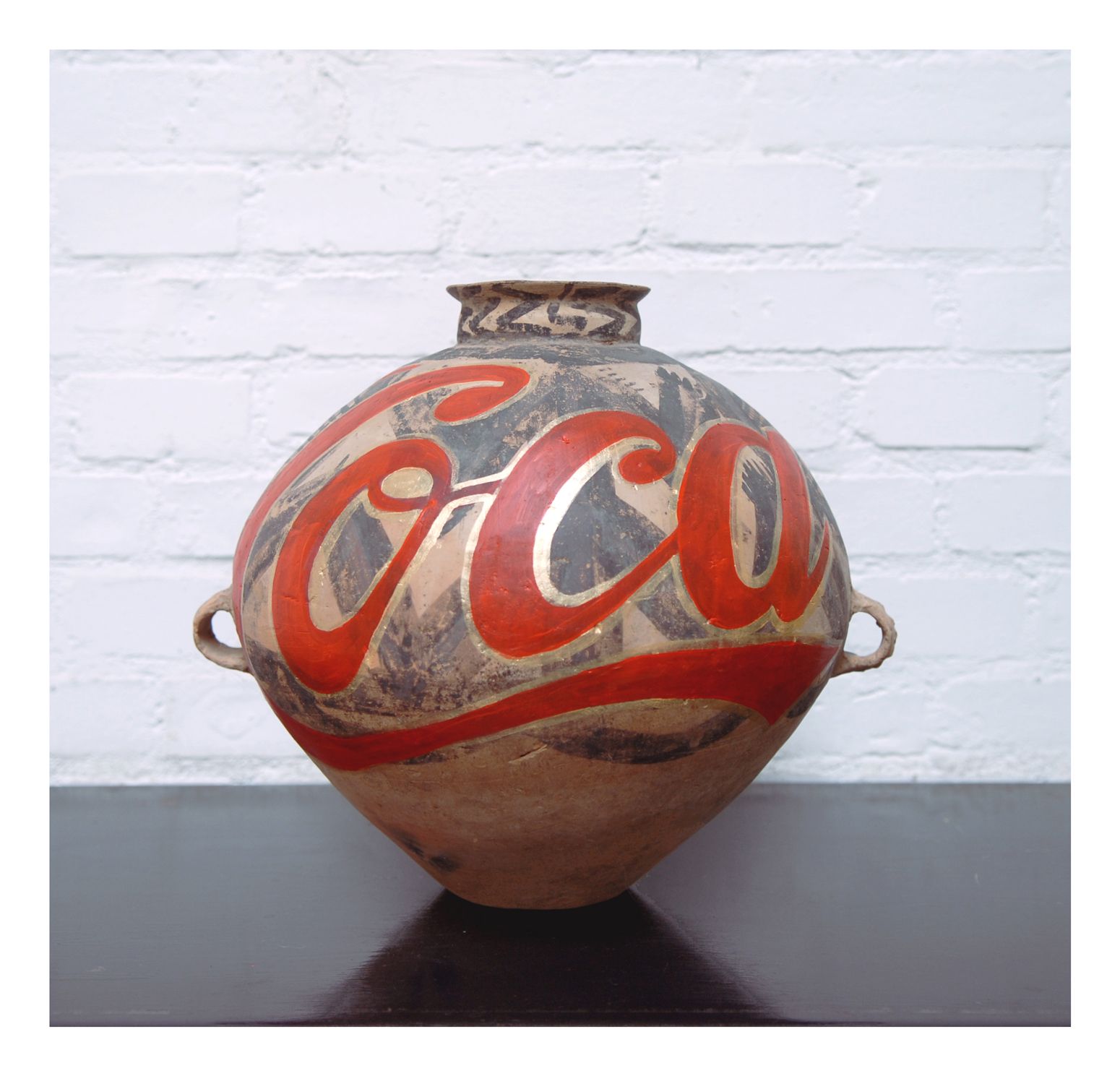
Coca-Cola Vase 1997 vase from Neolithic Age (5000-3000 BCE) paint 11 7/8” x diameter 13” Courtesy Tsai Collection, New York
Dr. Stacey Pierson
[Stacey Pierson] Dr. Stacey Pierson received her BA in Art History at Loyola Marymount University in 1988, her MA in Chinese Art in 1993 from the School of Oriental and African Studies, and in 2004 she earned her PhD in the History of Art from the University of Sussex. Currently Dr. Pierson is editor of the Transactions of the Oriental Ceramic Society and Assistant
Professor in Chinese Ceramics at School of Oriental and African Studies at the University of London. She has taught courses on Art and Culture in Imperial China, Asia and Africa on display: Objects, Exhibitions and Transculturation, and Ceramics in Chinese Culture: 10th-18th Centuries.
Dr. Pierson was formerly the curator of the Percival David Foundation which housed one of the finest collections of Chinese ceramics outside China and she continues to be actively involved in research and publication projects in this area. Her most recent publications include: Collectors, Collections and Museums: the Field of Chinese Ceramics in Britain, 1560-1960, Peter Lang, 2007; (ed.) “Transfer: The Influence of China on World Ceramics, Colloquies on Art and Archaeology” in Asia, no. 24, School of Oriental and African Studies, 2009 and Chinese Ceramics: A Design History, V&A Publications, 2009.
Glenn Adamson
[Glenn Adamson] Glenn Adamson is Deputy Head of Research and Head of Graduate Studies at the Victoria and Albert Museum, where he leads a graduate program in the History of Design. Dr. Adamson is co-editor of the triannual Journal of Modern Craft, and the author of Thinking Through Craft(Berg Publishers/V&A Publications) and a new anthology titled The Craft Reader (Berg, 2010). His other publications include Industrial Strength Design: How Brooks Stevens Shaped Your World (MIT Press), and Gord Peteran: Furniture Meets Its Maker(Milwaukee Art Museum). Presently he is working on an exhibition about Postmodernism, to be held at the V&A in 2011.
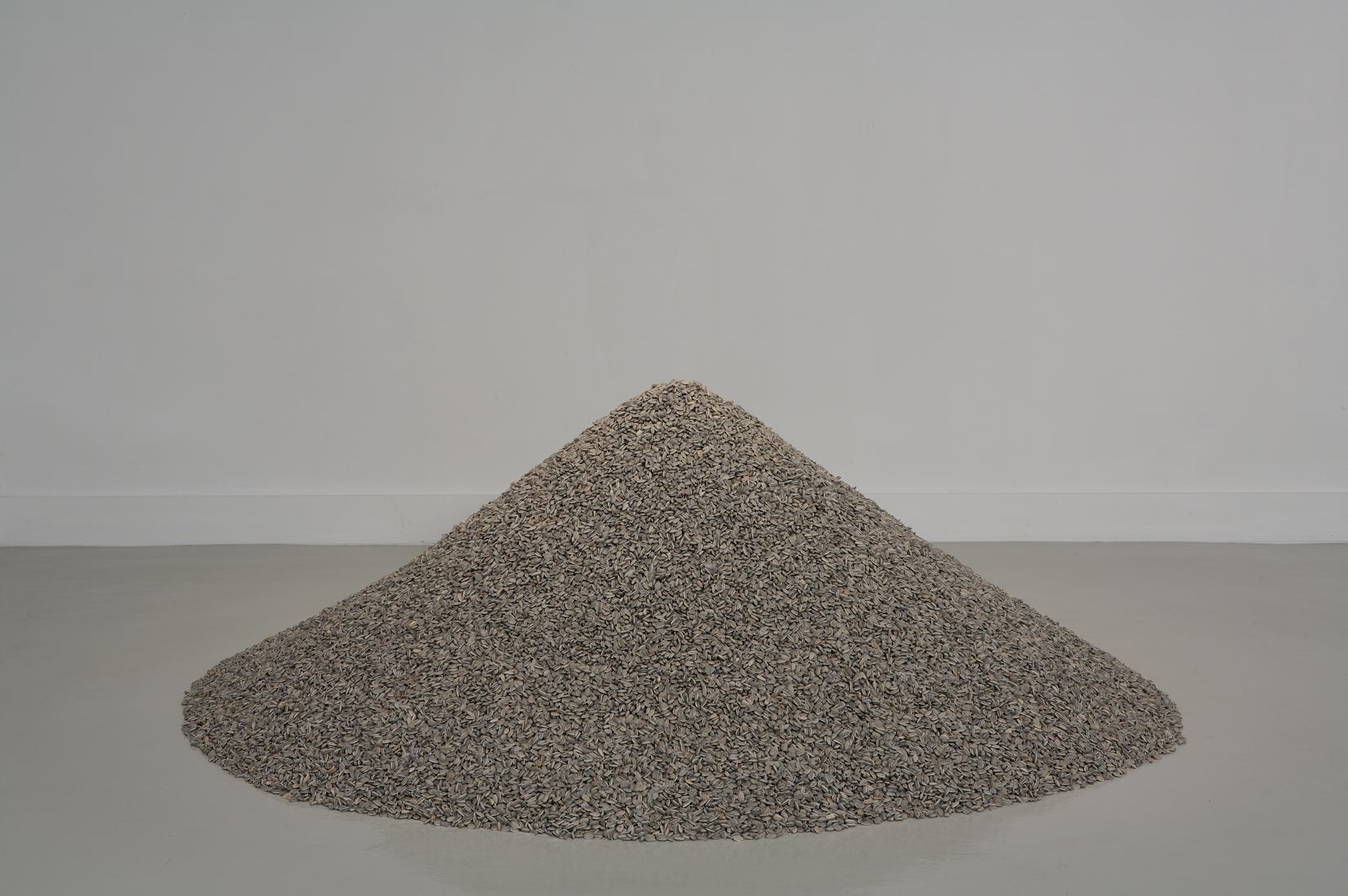
Untitled 2006 porcelain 1 ton. diameter approximately 80” Courtesy Ai Weiwei, Beijing

